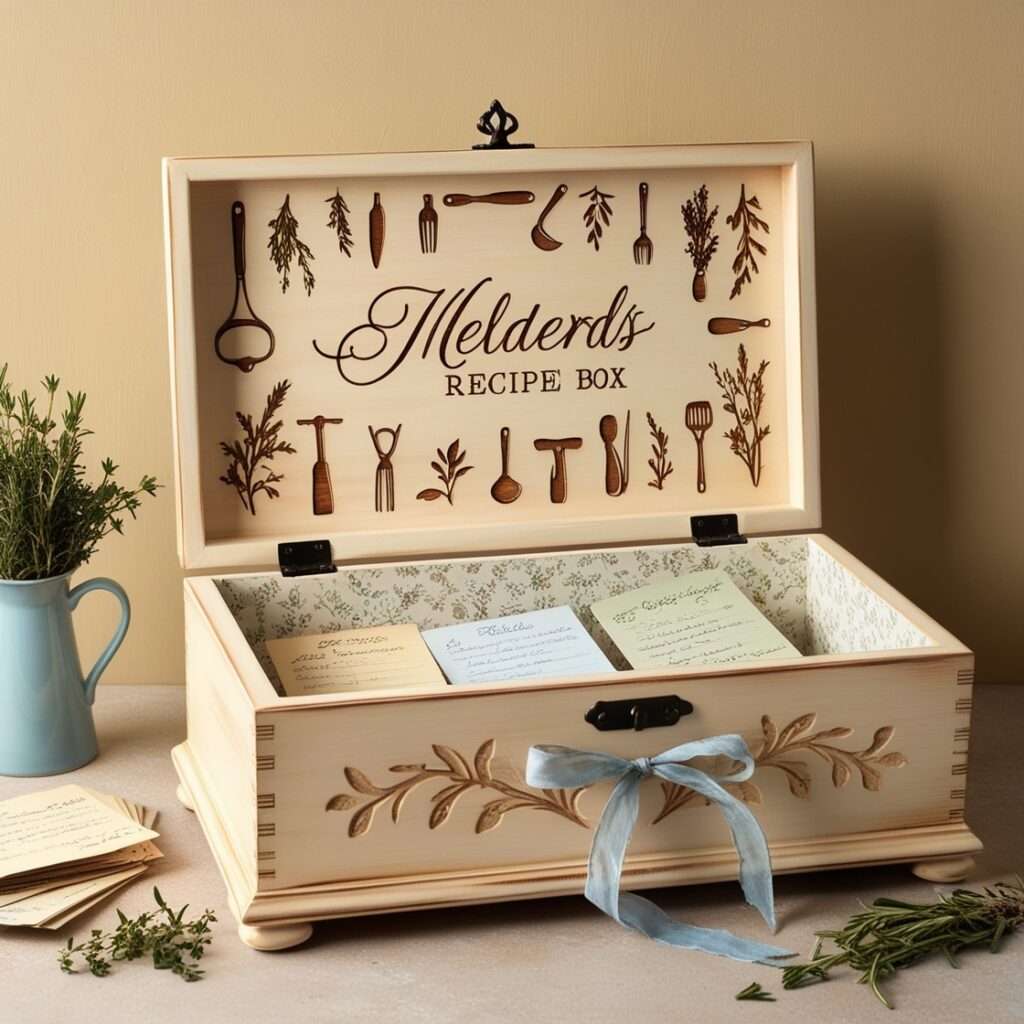TABLE OF CONTENTS :
- Introduction
- Step 1: Understanding the Importance of Categories
- Common Recipe Box Categories
- Step 2: Customizing Your Recipe Categories
- Step 3: Creating Subcategories for Detailed Organization
- Step 4: Using Dividers to Separate Categories
- FAQs
- Conclusion

What Are the Categories in a Recipe Box? A Complete Guide to Organizing Your Recipes
Organizing a recipe box effectively depends on the categories you choose. This guide will walk you through popular and useful categories to keep your collection functional and easy to navigate.
Introduction

A recipe box is a classic way to store family recipes, new cooking ideas, and special meals. Organizing your recipe box with appropriate categories ensures you can find the right recipe when you need it and can quickly expand your collection over time.
When organizing your recipe box, the categories you choose will define how easy it is to locate recipes. Whether you’re working with traditional recipe cards or binders, categorizing your recipes is essential for maintaining a user-friendly system.
Step 1: Understanding the Importance of Categories

Recipe categories help sort your collection into specific groups, which makes finding a recipe easier and faster. Without clear categories, your recipe box could become a cluttered mess. Here’s why categories matter:
- Organization: Categories group similar recipes together.
- Ease of Use: Helps you quickly find recipes based on the type of dish or occasion.
- Customizable: You can tailor categories to fit your cooking style.
Common Recipe Box Categories
The following are standard categories that most people use to organize their recipe box:
- Appetizers
Small dishes served before the main course. Perfect for parties or family gatherings. - Soups and Stews
Warm and hearty, soups and stews make up an entire section of easy-to-make meals. - Salads
A category for both light and hearty salads, perfect as side dishes or main meals. - Main Dishes
These include meals like beef, chicken, vegetarian, or seafood.
This category can be further subdivided based on the type of protein or cooking method (grilled, baked, etc.). - Side Dishes
Recipes like vegetables, grains, or pasta that accompany the main meal. - Beverages
From smoothies to cocktails, keep your favorite drink recipes in one place. - Breads & Rolls
This section is for recipes like quick breads, yeast rolls, and muffins. - Desserts
Organize sweets like cakes, pies, cookies, and brownies in a specific section. - Breakfast & Brunch
Keep all your morning meal recipes together—pancakes, eggs, casseroles, and more. - Snacks
Recipes for quick and easy bites, perfect for between meals or parties.
For a more extensive list of possible categories, you can explore Cookbook Publishers’ divider options.
Step 2: Customizing Your Recipe Categories
Every kitchen is unique, so customizing your recipe box categories is important. Here’s how you can adjust your categories to fit your needs:
- Family Favorites: Create a special section for dishes your family loves to cook often.
- Cultural Cuisine: Separate recipes by region or cuisine, such as Italian, Mexican, or Asian.
- Special Diets: Organize by dietary preferences like gluten-free, keto, or vegan.
- Cooking Methods: You might want to create categories for grilling, baking, or slow cooker recipes.
Step 3: Creating Subcategories for Detailed Organization

If your recipe box is growing, adding subcategories can help keep things organized. Subcategories are especially useful for main dishes and desserts, where you might have a variety of different meals. Examples include:
- Under “Main Dishes”: Beef, poultry, seafood, and vegetarian.
- Under “Desserts”: Cakes, cookies, pies, and frozen desserts.
- Under “Breads”: Yeast rolls, quick breads, muffins.
Tip: To create subcategories, you can use colored dividers or recipe cards to visually separate different types of dishes.
For more ideas on subcategories, explore Cookbook People’s Recipe Card Tab Dividers.
Step 4: Using Dividers to Separate Categories
Recipe box dividers are essential for maintaining clear sections within your box. Here are a few options to consider when adding dividers:

- Pre-Made Dividers: Many retailers sell dividers with pre-labeled categories. These are helpful if you prefer a ready-made solution.
- Custom Dividers: If you have unique categories, consider buying blank dividers to customize. You can find these online from places like Amazon.
- DIY Dividers: Make your own dividers using heavy-duty cardstock or index cards. You can label them using markers or stickers to match your kitchen style.
Using dividers keeps your recipe box organized, and categories clear, and reduces the time spent searching for specific recipes.
FAQs
What are the most common recipe box categories?
Common categories include appetizers, soups, salads, main dishes, side dishes, desserts, breads, and beverages. These categories cover most meals you’ll cook.
Can I add my own custom categories?
Absolutely! Personalize your categories based on your cooking style. Add sections like “Family Favorites” or “Quick Meals” for convenience.
Do I need subcategories?
Subcategories are helpful for larger recipe collections. If you find that a category has too many recipes, creating subcategories like “Beef Dishes” or “Holiday Desserts” can make navigation easier.
Where can I buy dividers for my recipe box?
You can purchase pre-made or customizable dividers from sites like Etsy or Cookbook Publishers.
Conclusion
A well-organized recipe box is essential for any home cook who wants easy access to their favorite dishes. By selecting categories that reflect your cooking habits and preferences, you can ensure your recipe box stays neat and functional. From classic categories like appetizers and desserts to more personalized sections like family favorites, the key is to create a system that works for you.

